+91-8929175340
+91-8929175340
Odisha is predominantly rural, with fertile green coastal plains rising to the hills of the Eastern Ghats. In below given itinerary we try to show you something special, non touristic and friendly ethnic villages of north , western and south central orissa . Most of our village has character and completely different from one to other. We try to display the classic idea of real Odisha- the soul of Incredible India.All characterful villages of wonderful tribal land of Orissa such as -
Juang, Kolha, Ho, Santal, Paudi Bhumiya, Chaukhutia Bhujia, Dongaria Kondh, Lanjia Saura, Bonda, Ollar Gadhava, Desia villages .
Day 1 : (Sat)-Bhubaneswar-choudwar (1. 20hr drive+ visit)
Upon arrival airport/ railway station meet our representative and transfer to hotel. Bhubaneswar is a capital city of orissa, drive towards Choudwar, check in nice heritage haveli at Kilajodi/ Choudwar
Overnight- choudwar
Day 2 : (Sun)-Choudwar- Saura Village- Munda tribal village- Choudwar (2.15 hr drive+visit)
Early standup to hike the very isolated saura tribal village in the core jungle area.
Afternoon visit the most interesting Munda tribes at their village.
Overnight- choudwar
Day 3 : (Mon)-Palm leaf fan/mat-Tribal jewellery making village-Dhenkanal(3hr drive+visit)
Meet the palm leaf fan and mat preparing local at their village. Near to that village meet the tribal jewellery making local at their village see the live technique of tribal jeweller making. Meet the Mahima sadhus at their monastery and then return back to the same palace.
Overnight- Dhenkanal
Day 4 : (Tue)-Dhenkanal – Juanga Tribal village- Keonjhar (6hr drive+visit)
Enjoy the royal breakfast at the open royal garden , then drive towards Keonjhar and enroute meet the Juanga tribes at their very remort village. Explore their life style at there.
Overnight- Keonjhar
Day 5 : (Wed)-Keonjhar- Bhumij , Kolha and Santal tribal villages- Keonjhar (4hr drive+Visit)
Morning drive toward Bhumij, Kolha and santal villages in the core jungle of Mayurbhanj area and full day excursion at there, if permit enjoy the hygienic cooked organic food at the santal village with the help of local (if you interest, its optional) evening back to Hotel.
Overnight- Keonjhar
Day 6 : (Thur)-Keonjhar- Paudi Bhumiya tribal village- Sambalpur (5hr drive+Visit)
Morning after breakfast drive towards Sambalpur , and enroute visit the Paudi Bhumiya tribal village in their isolated village.
Overnight- Sambalpur
Day 7 : (Fri)-Sambalpur- Textile village at Barpali area- Balangir (3hr drive+Visit)
Sambalpur also famous for Textile weaving throughout the world. Visit the famous textile village at Barpali area, meet the national award winner weavers and excursion their unique tie and dye technic (famously known as Bandha)
Overnight- Balangir
Day 8 : (Sat)-Balangir- Chaukathia Bhunjia tribal village- Bhavanipatna (6hr drive+Visit)
Early drive towards Nuapada area , meet the most colorful Chaukathia Bhunjia tribes at their non tourist isolated village.
Note- this particular tribal community has continue very strictly their own rule at their village so before photography please consult with your tour guide.
Overnight- Bhavanipatna
Day 9 : (Sun)-Bhavanipatna- Kutia tribal village- Rayagada (4hr drive+Visit)
Meet the Kutia Kondh (tattoo faced) tribes at their isolated village of Kondhmal area while hiking (1.30hr). Then check in a clean comfort hotel at Rayagada.
Overnight – Rayagada.
Day 10 : (Mon)- Lanjia Saura Tribal village- Rayagada (6hr drive+Visit)
Excursion the Lanjia Saura Tribe at their village.
Lanjia Saura: one of the most colourful tribe not only of our state but also our country. The only Aryan tribe of the state. Famous for their four special thing such as they use wood plug on the ear lob, their special tail shaped dress material ( they called lanja- that why they called lanjia saura), terrace cultivation , special mural dream painting they called idital. After full day excursion return back to Rayagada for overnight stay.
Overnight- Rayagada
Day 11 : (Tue)-Desia Kondh tribal village/ Weekly market- Dokra metal casting village- Rayagada (3hr drive+ v
Meet the Desia Kondh tribes at their isolated village. Excrusion their culture at their weekly market.
Desia kondh village- on the top of high hill and lush green forest ( but that unique village has all weather motorable road) while hiking their village excursion their lifestyle.
Meet the Dokra metal casting artisan at their village and explore the live metal dokra craft with warm hospitality by the local.
Pm- if time permit visit the tribal goddess temple at “Majhighariani”.
Overnight- Rayagada
Day 12 : (Wed)-Dongaria Tribal village/ Market- Mali tribal Village- Jeypore ( 4hr drive+visit)
Meet the colourful Dongaria(Dunguria) tribe at their village, / Market at Chatikona etc
and Then after drive to Kuvi kondh village and Mali tribal village too and then check in a nice hotel at Jeypore.
Overnight- Jeypore
Day 13 : (Thur)-Bonda tribal market- Ollar Gadhava tribe village-Rana Tribe village-Jeypore(6hr drive+Visit)
Early departure to meet the most colorful tribe Bonda at their weekly market and then colorful Olar Gadhava tribe at their village
Gadhava tribe- they are special for their dress material called keranga and their house making style, visit their worship place, meeting place etc. (enjoy their Dhemsa group dance at their isolated village,)
and hiking the rana tribe in the lush green forest area then drive towards Jeypore check in a nice hotel at Jeypore.
Overnight- Jeypore
Day 14 : (Fri)- Pottery making village-Sano paraja tribal village- Kunduli- Visakhapatnam(5hr drive+Visit)
Morning after breakfast check out departure towards Visakhapatnam , enroute visit the most ancient pottery village where the group of pottery making family busy with their traditional work.
Meet also sano paraja at their village, enjoy their special tech. Bagad dove.
Meet the Paraja, rana & Mali tribes at their grand colorful weekly market at Kunduli.
Overnight- Visakhapatnam
Day 15 : (Sat)-Departure (30 min. drive+Visit)
Morning after breakfast check out and departure for Visakhapatnam airport board the flight for your onwards destination.
Tour Concludes:
Other Terms & Conditions :
JUANG
The Juangs believe that in ancient times their tribe emerged from earth on the hills of Gonasika where the river Baitarani has its source, not far from the village Honda in Keonjhar. In their language the word "Juang" means man. In other words, man emerged from the earth at the same place where the river Baitarani emerged. The Juang also refer to themselves as patra-savaras(patra means leaf). By this they mean that they are that branch of the Savara tribe whose members used to dress themselves in leaves.
In the Juang society, the village is the largest corporate group with formally recognized territory. Within the delineated land boundaries they possess their land both for settled and shifting cultivation and the village forests for exploitation . They shift their village sites frequently as they consider it inauspicious to live at a particular place for a longer period.
Each Juang village is marked by the presence of a dormitory known as Majang where their traditional dance takes place and the village panchayat sits. It also serves as a guest-house for the visitors to the village. The Pradhan who is the secular headman and the Nagam or Boita or Dehuri, the village priest constitute the traditional village panchayat of the tribe. A group of neighbouring villages constitute a pirh which is headed by a Sardar who decides inter-village disputes.
A Juang husband generally worships the "Sajana"(drum stick)tree if his wife turns out barren and gives her a paste made of "Sajana" flowers and seeds to eat or he ties a sevenfold cotton string with seven knots round his wife's neck, believing this to be a kind of talisman which will cause conception. The Juangs do not allow their pregnant women to go to "Devisthan". She must not tie up any thing ,must not weave mat or plaster a house with mud.
The Juang life is marked by the celebration of a number of religious festivals in honour of their gods and goddesses. They believe in the existence of spirits and ghosts.
They observe different animist festival. All these occasions are marked by dancing and singing. They use a kind of drum known as changu at the time of dancing.
MUNDA
The Mundas wear a loin cloth with coloured borders called "botoi". On special occasion they use a kind of silk belt called "Kardhani". They cover the upper part of their body by a wrapper called "barkhi" which is about six yards long. A short variety about three yards long, called "pichouri" is also used by them. The women wear a long piece of cloth like a sari round the waist called "Puria" which they pass across the shoulder to cover their breast.
The women are fond of jewellery which is generally made of brass, silver or gold. They use bracelets, armlets, necklets, anklets, ear-rings, rings for fingers and ties. The women are fond of decorating their hair with flowers. They tattoo their face, chin, arm, head and feet. This practice is called "Sanga" in their language.
The mundas erect usually big memorial stones in the burial ground. After a memorial stone is erected, a sheep or goat is slaughtered near it and a feast held in which kinsmen partake of the meat and liquor.
The mundas worship their own tribal deities. "Sin Bonga" is their supreme deity who is responsible for their creations. They also believe in the existence of a number of spirits who are responsible for diseases and death.
Mundas are primarily agriculturists but some of them earn their livelihood as daily labourers. Collection of forest products is one of their subsidiary occupations. They sometimes migrate to distant places to work as labourers in mines, quarries etc.
SANTAL
The Santals have got their own dialect known as Santali which is said to be one of the oldest languages of India. This belongs to the Munda group within the Austro- Asiatic sub-family of the Austric family of languages. At present most of them speak and understand Oriya language.
The Santal society is well known for its division into twelve patrilineal exogamous clans, the names of which are occasionally used as surnames by the respective members of the group.
They live in spacious houses with a front and back verandah. The houses are clean and the walls are generally decorated with various artistic paintings in different colours.
Use of alcoholic drink is very common among them. Rice-beer is their traditional drink which is extensively used on the occasion of festivals and socio-religious ceremonies. They prepare this drink at home and purchase Mahua liquor from the local vendors.
They observe Karama festival and Makar Sankranti elaborately. Celebration of socio-religious ceremonies like birth, marriage and death are marked by dancing, singing and drinking.
BHUYAN
The name Bhuya or Bhuyan is derived from the Sanskrit word Bhumi meaning land. They consider themselves to be the children and owner of the land and hence are known as Bhuyan. In the district they are mostly found in Banspal and Telkoi. They claim themselves to be the autochthons of the area which is also known as Bhuyanpirh after their name. They speak Oriya as their mother tongue.
The Bhuyans are broadly divided into two categories, viz. the pauri Bhuyans and plain Bhuyans. The pauri Bhuyans live in the hilly and inaccessible areas of the Bhuyanpirh. The plain Bhuyans live along with the caste Hindu in the villages of plain areas.
The Bhuyan vilalges are divided into bandhu villages and kutumba villages. In the former, the marrying kinsmen reside. This division of villages generally regulates their marriages. Matrimonial relationship can be established between individuals belonging to Bandhu village only. In no case it is permissible between kutumba villages. Marriage between persons of the same village is strictly forbidden. Another important feature of their social organisation is the existence of a village dormitory, locally known as Mandaghar. It is a spacious house centrally located in the village. The open space in front of the Mandaghar is known as Darbar which serves as the meeting place for the traditional village Panchayats and the dancing ground for the villagers. The unmarried boys of the village are the members of the dormitory. This is also utilised as a rest house for guests from other villages.
The Bhuyans adopt both the practices of cremation and burial for disposing of the dead body.
The Bhuyans are mainly cultivators and agricultural labourers. They practise shifting cultivation called Toila chasa or podu chasa on hilltops or slopes. They grow paddy, gingili, mustard, ginger, maize, jalli, ragi and other crops extensively. Among women, weaving of mats from the wild date palm and preparation of broomsticks are common art. Men generally know rope making and a very few of them work as Carpenters. Collection of forest products is the major occupation of the community.
They perform Akhi-muthi or ceremonial sowing of seeds in the agricultural field, Asarhi puja for bumper crop and good rain, Gahma Punein for the welfare of the domestic cattle, Nuakhai for first-eating of new rice and Magha Yatra which marks the formation of the agricultural year. Their ceremonial hunting known as Akhin pardhi is observed in the months of March-April. They believe in village and forest deities and a number of spirits who bring disease and trouble to the society. The Dehuri (Village Priest) worships the deities.
HO
They live with other Tribes. Their houses are very neat. The walls are made of mud and the roofs are usually thatched with straw. Some have tiled roofs. They paint the walls in red and yellow and their numerous artistic designs speak of their aesthetic sense.
Their dress is scanty. Ornaments worn by women are very limited and simple in design. The Ho women pay particular attention to their hair. The hair is gathered up in a knot to the right of the back of the head and is adorned with the scarlet flowers of palasa and simuli or the pale yellow flowers of the Sal.
The Ho rigidly follow bride price . In their society marriage is settled by a dutam karji or marriage broker and is solemnized in the residence of the bridegroom . On the day of the marriage the bride and the groom are led to the altar. There the bridegroom pledges the bride by pouring some liquor ( handia ) from a cup of sal leaf to her. The bride also does the same to the bridegroom. The groom then applies vermilion to the forehead of the bride and this completes the marriage. Widow marriage and divorce are allowed among the Hos. Sororate and Levirate are also allowed in their society. But cross-cousin marriage or marriage with the sister's daughter is not allowed. Marriage within the same sib is also forbidden.
The Hos generally bury their dead. The purification ceremony called "Kamani" takes place on the 21st day.
The majority of the Hos speak their own language Ho which is their mother tongue. Some of them have adopted Oriya. A few speak mundari language.
The Hos of Keonjhar are agriculturists. Many take to agricultural labour due to insufficient or no land of their own.
Their supreme deity is Sing Bonga. They also worship all Hindu gods and goddess. Like other tribes they spend their whole life in fear and dread of evil spirits. They observe Akshaya Trutiya, Salui Puja, Makarsankranti, Sahrai or Bah Bongu, Gamha punein, Rajasankranti and Karama festival. Of these Sahrai or Bah Bonga is their most important festival.
Their main hobby in the past was hunting in the forests with bow and arrow. This has changed with the passage of time. Dancing in moon-lit night with drums and flutes is a popular recreation for them.
Pauri Bhuyans
Pauri Bhuyans of Orissa come under the category of PVTG on thebasis of the parameters laid by the Govt. of India (article 342, Constitution of India). Pauri Bhuyans identify themselves as a sub-group of the larger group,Bhuyan tribe. Bhuyans are also known in different names like Bhuiyas,Bhumia, Bhuinya. The name is derived from Sanskrit word ‘Bhumi’ meansland, for which ‘Bhuyans’ define themselves as “Son of the soil” (Roy 1953).While the Bhuyans’ own version of the studied villages about the origin of their name depicts that “Bhuyan” means “owner of land”, which is furtherexplained that Bhuyans were landholders. And Pauri (Pauri means people from hills and mountain) Bhuyan is defined as the Bhuyans belonging to Hillsand Mountains. Pauri Bhuyans define themselves as people of high socialstatus. As they say, their ancestors were strong and powerful people.
Bhunjia
According to the tribe, the term "Bhunjia" means "growing out of land" or "origin from the earth".
Bhunjias are divided into two main sections i.e. Chinda Bhunjia and Chaukhutia Bhunjia. The Chaukhutia Bhunjia are confined exclusively to the hills of the Sunabeda plateau in ecologically secluded areas for which they maintain distance from the outsiders. But the Chinda Bhunjia generally lives in the plains and have close contact with the tribal and non-tribal communities. The religious life of Bhunjia is very simple. They believe in many Gods and Goddesses who are worshipped in different months on different ritual occasions.
DONGRIA KANDHA:
In the remote mountainous wilderness of the Eastern Ghats region of South Orissa lives a fascinating Kuvi-speaking tribe called, the Dongria Kandha. They inhabit the lofty Niyamgiri hill ranges in the district of Rayagada. They stand apart from others for their famous Meria festival, expertise in horticulture and colorful dress, adornments and life style. For being the denizens of hills, forests and highlands (dongar), their neighbors name them Dongria. Dongria men and women are quite fashionable in their personal adornments, that makes them attractive and distinguish them from others. Dongria men put on a long and narrow piece of loin cloth and women use two pieces of cloth, each 3-4 ft. In length. Both men and women grow long hair. A wooden comb (kokuya) is fixed at the hair knot of men and women which adorns the hair-lock and keeps the hair tight. A tiny knife (pipli) with colorful thread balls at its metal handle, adorns the hair lock of women. Men and women put on aluminum neck rings, beads & coin necklaces (kekodika), finger rings. In addition to that women wear bangles, anklets, toe rings. Both men and women wear earrings and nose-rings.
BONDA:
In the wild and remote mountainous country located towards the south-western tip of the Malkanigiri highlands lives a unique tribal community called- “Bonda”. The tribesmen identify themselves as “Remo” (man). Bonda speak a language of their own that belongs to the Austro- Asiatic (South Mundari) language group. Bonda men are brave and bold. They derive their identity from their arms, such as bow, arrows, long knife which they always carry and sago palm-wine which is their most favorite drink. The Bonda women with their clean-shaven head decorated with head bands of Palmyra strips and plaited fillets of caryota fibber. Mass of colorured beads and shell strings, brass neck rings and necklaces hanging down even below the navel and the brass bangles covering the whole of the lower arms are the typical ornamentation of the Bonda Women. A short and narrow strip of striped loin-cloth woven at home by a double-bar tensioned loom covering only the private parts comprises the woman’s wear.
KUTIA KANDHA:
The Kutia Kandha is a section of the Kandha tribe found in Kandhmal and Kalahandi dist. (south central part) of Orissa. The tribesmen are known for their buffalo sacrifice ritual locally known as “Kedu” to worship their Earth Goddess- “Darni Penu”. They belong to the Proto-Australoid racial stock and shspeak a dialect their own called “Kui”, which belong to Dravidian language family. They worship large number of deities and spirits; the chief among them is Darni Penu, the Earth Goddess worship by the village headman called Majhi and the village priest is called Jani.
LANJIA SAORA:
The saoras are one of the most ancient tribes of India. Have a racial affinity with the Proto- Australoid stock, their dialect called Sora, comes under the Austro-Asiatic family of Munda group of languages. Lanjia Saora constitutes one of the primitive sections of the Saora tribe. They are so called by their neighbours strip of male loin cloth is worn in such a fashion that both the red embroidered ends hang down in front and back like a tail (Lanja). Their women greatly enlarge their enlarge their ear lobes to wear rounded wooden pegs and have a characteristic tattoo mark down the middle of the forehead. Install the village deities represented by wooden posts at the entrance of the village. Have male and female shamans to serve their magico-religious needs. Famous for their attractive wall paintings,” IDITIAL”. Observe Guar, the secondary burial ritual to commemorate the dead by sacrificing buffaloes and by erecting menhirs.
GADABA:
Culture of the Gadaba, one of the prominent tribal communities of Orissa. The name; Gadaba has been derived from the word “Gada”, name of a brook in the Godavari valley. The tribe has Proto-Australoid origin. The Gadaba speak Mundari language, called Gutob belonging to Austro-Asiatic language family. The Gadaba men use a piece of cloth, called lenguthi with a flap, which hangs down in front. Women wear two pieces of cloths, each measuring about 5ft. By 2 ft. Called Keranga. The Gadaba girls/ women decorate their bodies with ornaments such as peculiar type of earrings, which are made out of brass or aluminium which hangs down from a hole in the ear that reaches the shoulder. Besides, they use ornaments, like rings (mudi) bangles made of brass. Their hair is neatly combed and fixed at the back by hairpins.
| Tribal Fair and Festival in orissa | 2018 |
| Mandei at Nabarangpur | 1st Nov-3rd Nov. |
| Dhanuyatra festival at Bargarh | 23rd Dec. 2017– 2nd Jan 2018 |
| Joranda Mahim Sadhu Fair (Mela) at Joranda | 30th & 31st Jan |
| Chariot festival at Bissamcuttack & Puri | 16th -24th July |
Orissa Tribal Tours View Profile
5 / 5
About Orissa Tribal Tours
Contact Agent Plan A Trip Text Me
Client Testimonials

Fgdsjgjhg -
Reviewed: Dec 06, 2018
Being a travel enthusiast, I was searching for a travel agency that can provide exciting travel packages across exotic locations. I tried many travel websites but I found this company to be the best. And, trust me, it was one of the best decisions I have ever made. I got numerous exciting deals on every package I chose. I believe this company is one of the most trusted travel agents.

Atul -
Reviewed: Nov 29, 2018
I was looking for a travel agent in the market that can provide amazing tour packages. I am delighted that I joined hands with this travel agent to get the best deals. Its customer care executives are really helpful. I provided my details and requirements for the travel package along with my budget and they suggested me the best package. Thanks!

R DALIP SINGH -
Reviewed: Nov 19, 2018
My decision to put my faith in this company for longer period turns out to be the best decision I have ever made. I am enjoying their services from very long and thus, I can confidently state that they provide the best deals for any travel requirement. Thank you for turning me into a loyal client of yours.
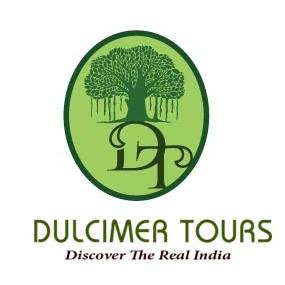
Orissa Tribal Tours
5 /5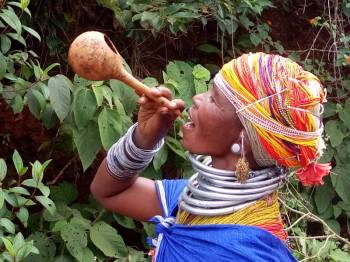 10D/9N
10D/9N
Bhubaneswar - Rayagada - Jeypore - Gopalpur - Bissamcuttack - Onukudelli - Kondagaon
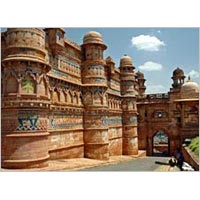 15D/14N
15D/14N
New Delhi - Agra - Gwalior - Bhopal - Indore - Mumbai - Tikamgarh - Chhatarpur - Au..
08069911034
Get Quote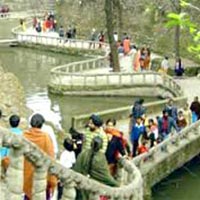 15D/14N
15D/14N
Chandigarh - Shimla - Manali - Dalhousie - Amritsar - Dharamshala
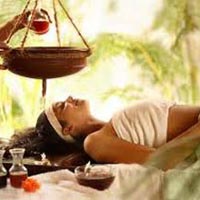 15D/14N
15D/14N
New Delhi - Haridwar - Rishikesh - Shivpuri - Agra - Jaipur
08048787310
Get Quote 7D/6N
7D/6N
Puri - Kolkata - Bhubaneswar - South 24 Parganas
08047017530
Get Quote